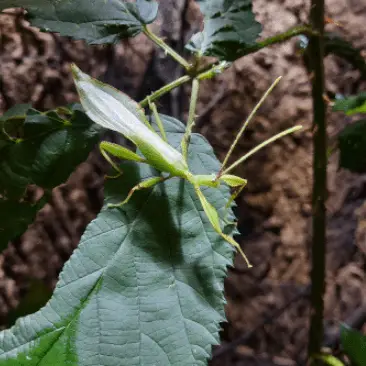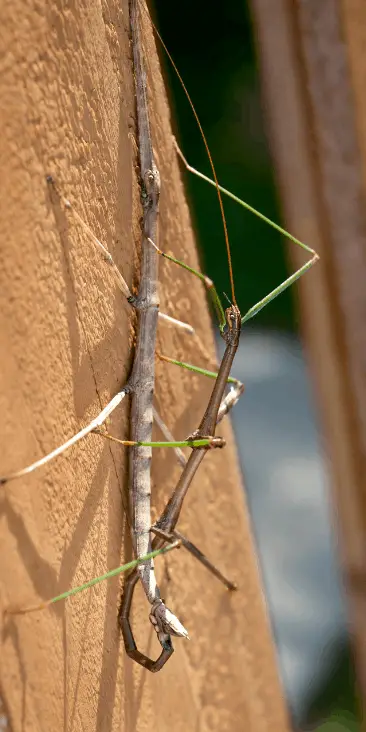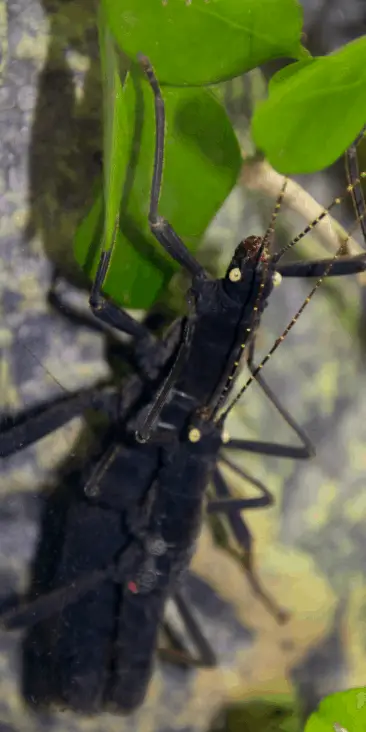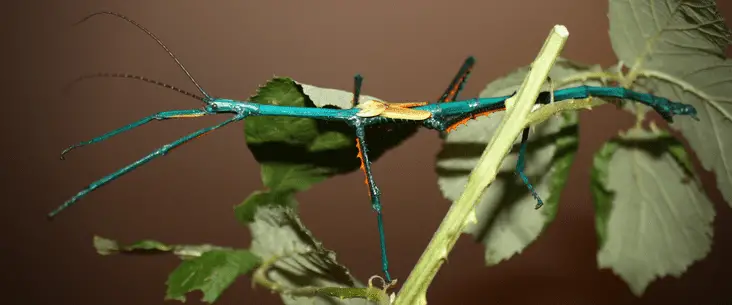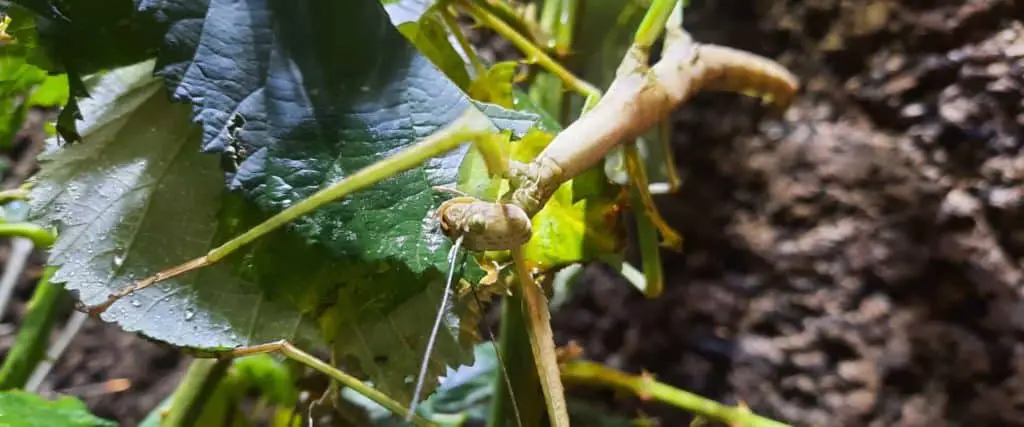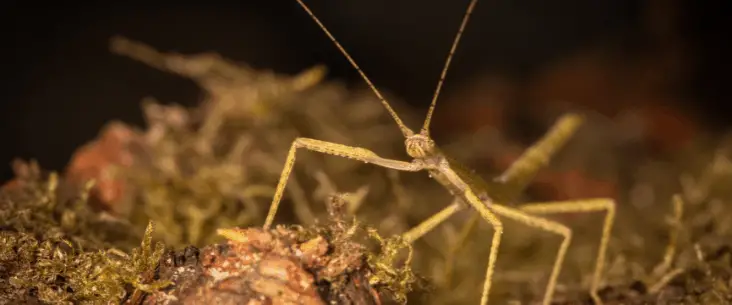Are you wondering if you have a male or female stick insect? It can be useful to know the gender of your animal. For example, to name your stick insect. But if you want to breed with them, you probably want to know if you have both sexes. And what about the sex of your offspring. But how to tell the gender of your stick insect? In this article, you can learn how to distinguish between males and females. What are the characteristics? What to look for?
You can tell if a stick insect is a male or female by looking at the body size, body type, the formation of wings, and the length of the antennae. Many stick insect species have sexual dimorphic characteristics, but there are some stick insects where there aren’t differences between both genders.
So if you want to know if your stick insect (or leaf insect in that matter) is a male or a female, check out the different characteristics down below. But first, what is sexual dimorphism exactly?
Sexual dimorphism
Sexual dimorphism simply means that there are morphological differences between males and females beyond the differences in their sexual organs. These characteristics can include body size, colour, markings, weight, body shapes, certain appendages, and even behavioural differences. Some animals have low to no differences between the sexes. Take for example horses or cats. With stick insects and leaf insects, however, many have differences in shape and size. Some differences are quite subtle and others are rather obvious. Let’s talk about which characteristics can help you determine if your animal is a male or a female.
Visual differences between male and female stick insects
Male and female stick insects look with most species different from each other. The easiest way to spot the difference is when you can compare both next to each other. However, there are some very distinctive differences that tell you if you have a male or a female. When stick insects hatch, these differences are not visible. Oftentimes you can start seeing the differences from stage L3 to L5, depending on the species. Also, the degree of differences highly depends on the species. In this section, we discuss how you can tell the gender of your stick insect.
Body size
For most stick insects and leaf insects, the body size is very different between males and females. Generally, females are much larger than males. This is especially clear when you see a male and female next to each other (or on top of each other while mating, but then it is also clear which is the male and which is the female). The difference in size starts to become most obvious around stage L5, but with some even later.
Body shape
Besides body size, with many stick insect species there is a clear difference in body shape between males and females. Generally, females are rounder and thicker, but with some species much bulkier. For example, giant prickly stick insect females are very bulky, while the males are very thin. With leaf insects, it is also quite clear which are the males and which are the females. As can be seen in the photo above, females are much more shaped like a leaf than males. Besides, females are also much larger though. With phyllium philippinicum you can see the difference as early as stage L3.
If it is not the difference in size, you can often see the difference in body shape. Females produce the eggs, and their abdomen is often much thicker than that of males.
Antennae
With quite a few species you’ll also see a difference in antennae. Males have longer and/or thicker antennae than the female. This is only visible with adult species or when they are in the last stage before they become an adult. The smaller nymphs don’t have antennae yet, and they only start to develop in the later stages.
However, this difference is not true with all stick insect species. For example, in black beauty stick insects, both sexes have large antennae (although the male has a bit larger ones). You almost can’t see the difference when you don’t have both sexes right next to each other. On the other hand, with leaf insects, the females completely lack antennae, whereas males have quite large ones.
Presence of wings
With some stick insects species, both sexes have wings, with some only the males and in some species, both sexes lack wings. But (at least if they have some sort of wings) it can still be used to determine if you have a male or female stick insect.
When both sexes have wings, the wings of the male are larger and better developed. From an evolutionary point of view, stick insect males need to travel much more distance to find females to breed with. To ease this travel, some stick insects can fly (although it looks quite clumsy).
When only one of the sexes has wings, you can know for sure it is a male. There are no species as far as I know where only females have wings. However, they are not always completely developed. Some only have little flaps (like underdeveloped wings). But rather often they have some clear distinctive markers on the inside and are visible when unfolded.
Related read: Can stick insects fly? A closer look at their use of wings.
Colouration or markings
With some stick insect species, you can tell the difference between males and females by looking at the body colour or markings. For example, with Jungle Nymphs (Heteropteryx dilatata) the females are bright green and the males dull brown. In the case of this species, the males also have fully developed wings whereas the females have only smaller underdeveloped wings.
Some species have a quite clear difference in colours or markings, others have very subtle differences. There are also species where both sexes have beautiful colouration and or markings. One of the more beautiful stick insects in turn of colours is Necroscia annulipes. Both sexes have beautiful colours and except for body size, there are not many differences between both sexes.
Parthenogenesis
You probably wanted to know the sexes of your stick insect because you like to breed with them. Some stick insect species have developed a very unique way to produce offspring called parthenogenesis. In short, the female can produce you without needing a male!
Parthenogenic females produce unfertilized eggs that still develop and grow into adult stick insects. It is a form of asexual reproduction (only known with very few animal species). So you can ‘breed’ with some stick insect species as long as you have females that can reproduce this way.
There are only two notions must make. First, because there is no fusion between the female’s egg and the male’s sperm, the offspring are complete copies of the mother and therefore they are all females. Parthenogenetic females only produce female offspring. Secondly, the offspring of some species that can produce parthenogenetic are somewhat weaker and the survival rate may be lower. Although not true for all species, I have seen some differences in longevity with Phyllium philippinicum.
Also, eggs from parthenogenesis take much longer before they hatch. Read more about is in the article about how long it takes before stick insect eggs hatch.
When a stick insect species can produce sexually, I always prefer to find both males and females to breed with them. There are many studies done that conclude that sexual reproduction is more favoured than asexual reproduction. The (future) survival and genetic diversity are advantages of sexual reproduction.
Other bugs you can keep as a pet
Although stick insects are amazing pets, there are many other bugs that make great pets too. Check out the bugs below, maybe you find them even more interesting to keep.
– Praying mantises
– Millipedes
– Beetles
– Ant colony
– Tarantulas
Share this page!

